One of the biggest struggles, yet most important skills, for many doubles tennis players to learn is the ability to serve and volley.
If you aren’t comfortable at the net, struggle to hit the difficult half volley, or are just starting to get good enough at tennis to serve and volley, this lesson is for you.
First, I’ll show you how to think about the serve when you know you want to get to the net. Then you’ll learn some tips on hitting the tough half volley before moving into the net. Last, I’ll cover basic strategies and tactics you can use for playing at the net.
What is the Serve and Volley?
Mostly used in doubles, the serve and volley is a tactic that players use to get to the net quickly after their serve.
Really, it’s just like it sounds. You serve and let your momentum carry you forward into the court, trying to get to the net as quickly as possible so that you can hit a volley for your next shot.
Here’s an example of a professional doubles team executing the serve an volley.
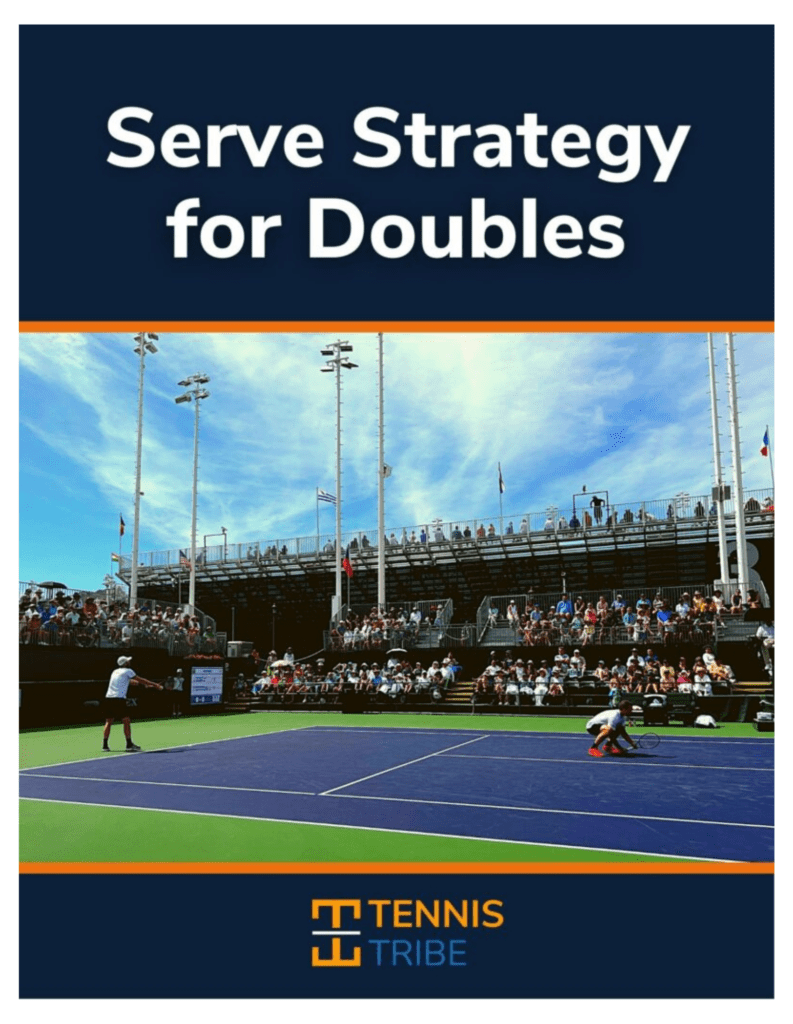
This 55-page Ebook includes EVERYTHING you need to know
Serve Tactics Guaranteed to Make Holding Serve Easy
Learn to hide your weaknesses, force return errors, and create game plans with your doubles partner to hold serve more often.
How To Serve When You Plan to Serve & Volley
The key to the serve and volley starts, of course, with the serve.
You’ll want to make sure your momentum goes out into the court, so you can use that to continue to go in.
If you’re new to the serve and volley, start with a slow serve to the backhand side. This will give the opponent a more difficult shot to the backhand, and it will give you time to come in.
I like to hit a slice into the backhand on the deuce side, and a kick out wide on the ad.
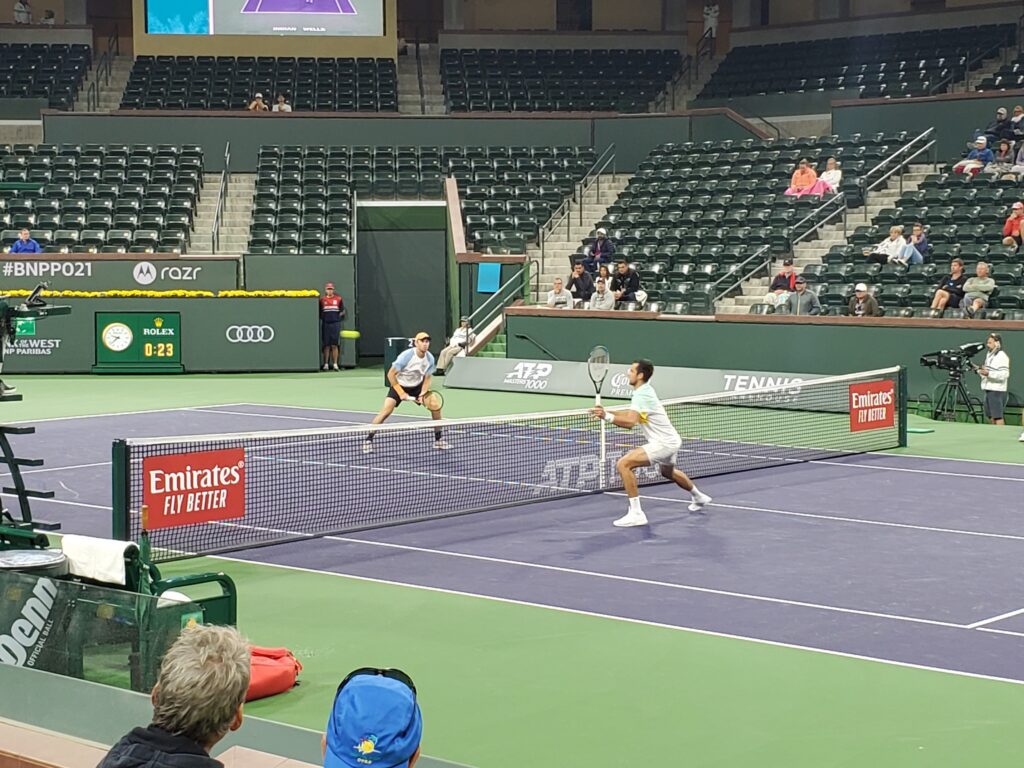
For more advanced players who are better at serving, change it up! Try some slices out wide, flat serves into the body, slow and fast serves. The last thing you want is the opponents to get into a rhythm with their returns.
Changing it up will help you generate more errors and easier volleys on your next shot.
Tips for Hitting a Half Volley
The next shot is the dreaded half volley. Master this and the rest is easy. Then you’re just playing from the net.
Get Your Racquet Through the Tennis Ball
Many recreational tennis players have trouble with the half volley.
The most common mistake I see with the half volley is that players don’t get their racket head through the ball. They end up slicing under it or jabbing at it.
This will make you miss it out or pop it up for the opponent to embarrassingly smash it back in your face as you try to jump and turn to avoid getting hit while still trying not to look scared in case people are watching 😉
Point Your Strings Out & Don’t Swing!
To fix this focus on getting low and not bringing your racket back too much. The racket should not get behind you. Remember your body’s momentum will generate much of the pace. To put this another way, don’t swing at the half volley!
Simply punch the ball with your racket head moving in the direction you want it to go, usually crosscourt. When you make contact with the ball the strings should be pointed across the net in the direction you want the ball to go (racket head should be close to perpendicular to the court). If the ball is popping up in the air, then your strings are pointed up and you’re probably slicing under the ball instead of hitting through it.
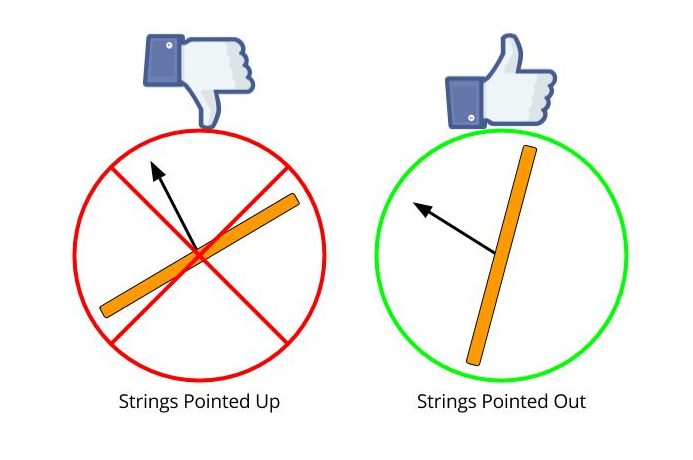
You’ll probably need to have someone watch you do this because you will think you’re doing it right, but you’re probably not.
The ball should stay relatively low and drive deep into the court.
This gives you the chance to close in even more. Since you kept it low, the opposing net player will have trouble poaching. And because it’s deep in the court, the other player should be on their heels in a defensive position.
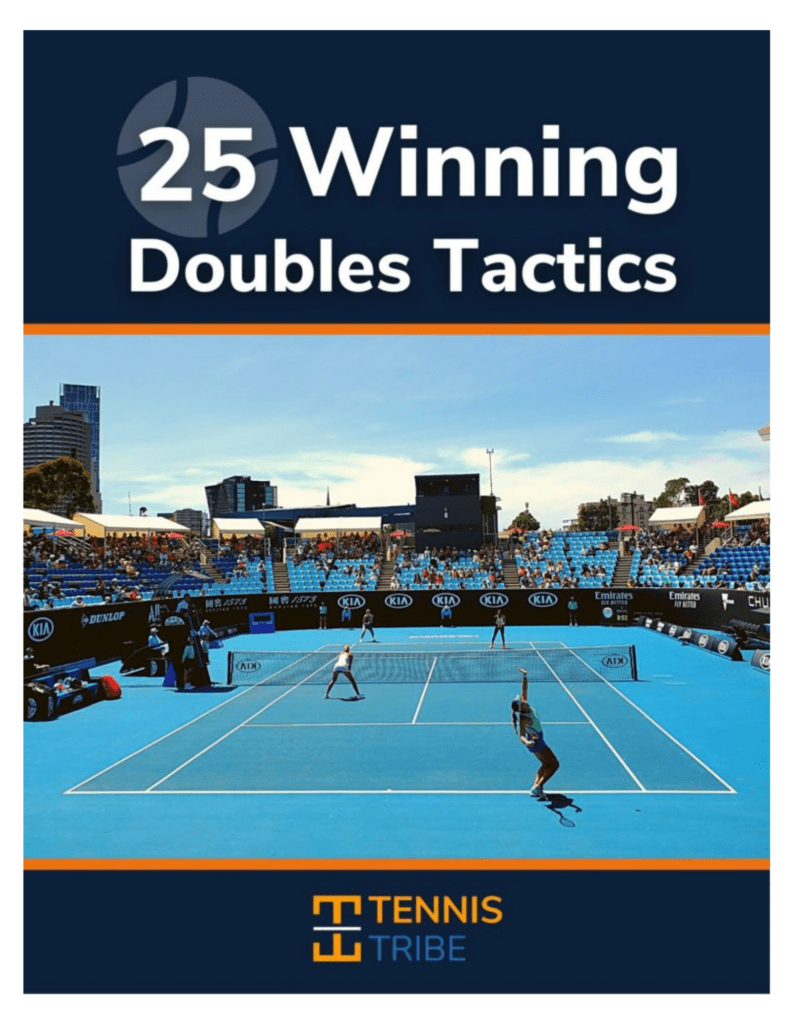
25 Winning Doubles Tactics Guaranteed to Help You Play Smarter
Ebook with 25 expert serve (7), return (5), net-play (5), baseline (4), & approach (4) tactics you can use in your next doubles match.
Net Play After a Serve and Volley
Keep moving forward into the net for your next shot. You should be able to touch the net with your racquet.
You or your partner should get a pretty easy next shot to end the point on if you hit a good half volley.
The key at the net is to hit the easy volley. Take the ball at it’s highest point and don’t try to go for too much. 80% of your volleys should be crosscourt because it’s typically the easier shot and you’ll be able to generate more power. Force the opponent into the more difficult shots, and keep your racket out in front, punching balls back.
If you get lobbed, then you hit a bad half volley. If you get lobbed again, the opponent is really good at lobbing and you should try a new doubles strategy 🙂
Why You Should Add the Serve and Volley to Your Tennis Game
The serve and volley is becoming less common in today’s tennis. However, in doubles, most points are won at the net. If you want to become a better doubles player, learning the serve and volley is a great weapon to add to your tennis arsenal. It’s a strategy that puts pressure on the opponent, and allow you to get to the place where most points are won.
For more doubles tips, including how to serve and volley, sign up for my doubles newsletter below.
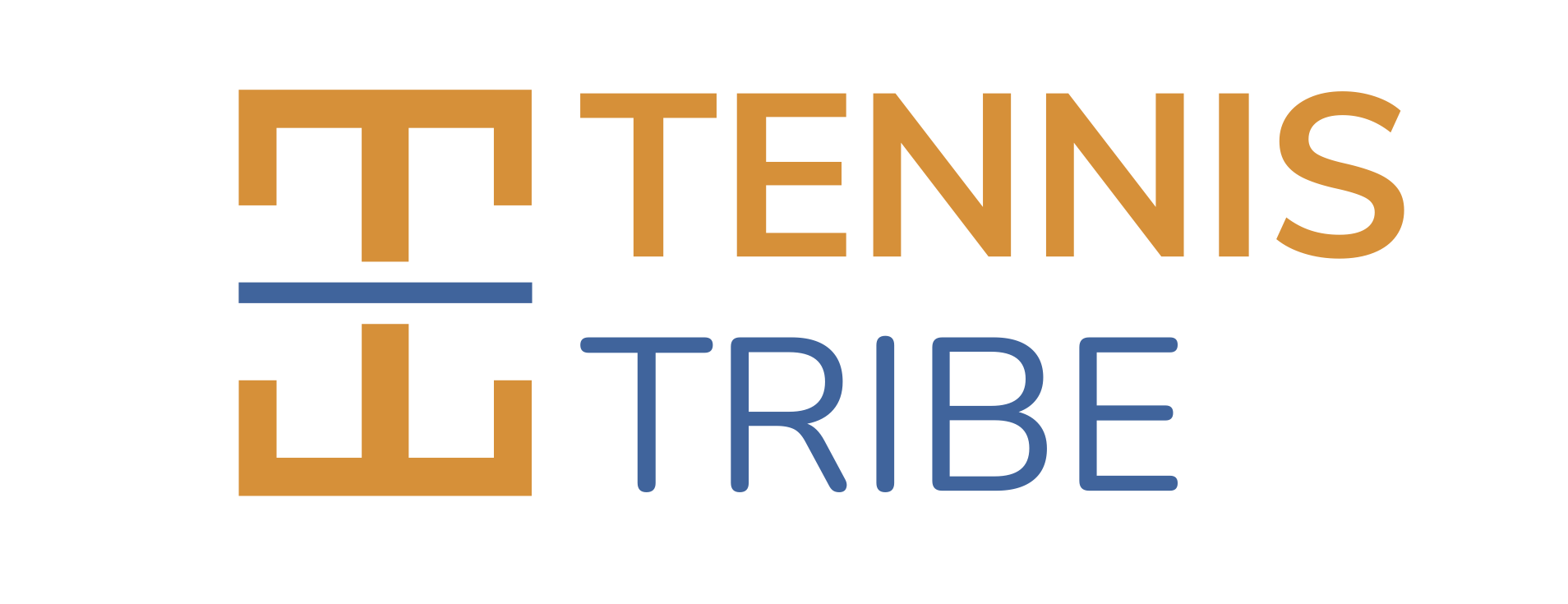
your comment clarifying the “tossing the ball back” in topspin serve is about the best explanation of it that I have heard. Please keep up the good work.
Thanks Steven! Glad it’s helping your tennis game 🙂